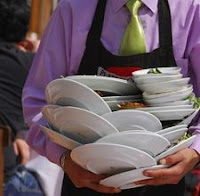- 48% of beverages obtained from soda fountains contained fecal coliform bacteria, 11% contained E. coli (which are mostly harmless, but some can cause diarrhea, urinary tract infections, respiratory illness and pneumonia), and 17% had Chryseobacterium meningosepticum (which could sicken newborns or adults with weakened immune systems).
- The U.S. Environmental Protection Agency’s drinking-water regulations require that all samples test negative for E.coli.
- Many of the soda beverages from the dispensers fell below U.S. drinking-water standards, according to the findings.
- It is premature, however, to draw broad conclusions about all soda fountains from a localized study.
- The samples were contained in petri dishes and the bacteria multiplied within 48 hours, so much so that they became visible to the naked eye as 300 to 400 tiny dots.
- Researchers were uncertain how the bacteria got inside the beverage machines, but very likely from unclean hands or rags used to wipe down machines.
- National Restaurant Association and American Beverage Association both assured public that eating out and using soda fountains were safe.
- A 1998 outbreak was linked to soda fountains after 99 soldiers in a U.S. Army base were hospitalized with gastroenteritis.
 Okay, my thoughts: First, scientist have to practice caution with what they claim, so if they haven’t tested something in particular, they can’t make unsupported declarations about it. But I can! Fecal matter on soda fountains are probably from poorly washed hands. The only other explanation that it might be from the rags used to clean the machines is no great comfort. Either way, it’s unhygienic and disgusting.
Okay, my thoughts: First, scientist have to practice caution with what they claim, so if they haven’t tested something in particular, they can’t make unsupported declarations about it. But I can! Fecal matter on soda fountains are probably from poorly washed hands. The only other explanation that it might be from the rags used to clean the machines is no great comfort. Either way, it’s unhygienic and disgusting.
Finally, it’s true that this study was done in one small area in Virginia, but my guess is that if a nationwide study would be conducted, they might find similar results. You see, the problem is that soda machines have to be messed with (I worked in the restaurant biz for many years as a student)–the syrup needs to be changed, as does the carbonated water. Anything that needs to be handled frequently always has an increased risk. Further, soda machines are very often maintained by busboys and wait staff. Whereas kitchen employees may be extra cautious about hygiene, servers and bussers may not. And if it’s self-serve…ugh, even worse.













